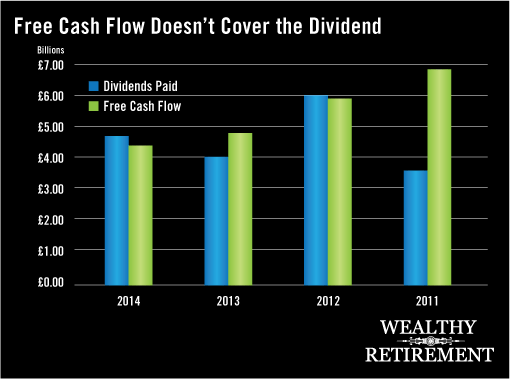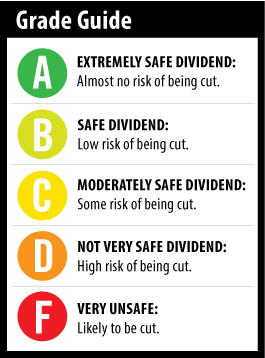 Generally speaking, I like stocks in the telecom sector for their healthy dividends. I have a couple of them in my Oxford Income Letter portfolios. I also like European stocks, as I believe its economy is at an earlier stage of recovery than the American economy.
Generally speaking, I like stocks in the telecom sector for their healthy dividends. I have a couple of them in my Oxford Income Letter portfolios. I also like European stocks, as I believe its economy is at an earlier stage of recovery than the American economy.
But when Howard asked me to take a look at U.K.-based Vodafone (Nasdaq: VOD), I didn’t like what I saw.
Weak Earnings and Guidance
[ad#Google Adsense 336×280-IA]The stock fell hard on Tuesday when the company reported worse than expected quarterly results and lowered the guidance for fiscal 2015, which started in April.
The company’s revenue in fiscal 2014 fell 1.9%.
Earnings before interest, taxes, depreciation and amortization (EBITDA) guidance for fiscal 2015 was £11.4 billion to £11.9 billion.
Wall Street had expected £12.5 billion.
That unexpected dip in profits is likely going to impact free cash flow, which already fell 21.5% to £4.4 billion in 2014.
That’s a problem because the company is paying out all or more of its free cash flow in dividends.
In 2014, Vodafone paid out £5.1 billion in dividends, despite tallying just £4.4 billion in free cash flow. Last year, the results were only slightly better, paying out £4.8 billion in dividends while generating £4.9 billion in free cash flow.
 In other words, the company did not generate enough cash this year to pay the shareholders the dividend it actually distributed. It had to find the money elsewhere. Last year, its cash flow only barely covered the dividend paid to shareholders.
In other words, the company did not generate enough cash this year to pay the shareholders the dividend it actually distributed. It had to find the money elsewhere. Last year, its cash flow only barely covered the dividend paid to shareholders.
In fact, Vodafone hasn’t comfortably covered the dividend with free cash flow since fiscal 2011.
 Big Dividend – For Now
Big Dividend – For Now
The American depositary shares (ADS) of Vodafone traded on Nasdaq sport a big 5.4% yield.
With the newly declared dividend, holders of the ADS should receive about $1.85 per ADS for fiscal 2014.
The company has raised the dividend for four years in a row, including 8% this year.
But I don’t see how that’s sustainable. If the company’s business were growing, I could give it the benefit of the doubt.
But with revenue, profits and cash flow all shrinking, and now expected to decline even further than previously thought, it’s hard to imagine that the dividend will keep climbing.
I wouldn’t be surprised if next year’s dividend were lower than this year’s.
But if it’s not and business doesn’t improve drastically, I’d expect a cut by fiscal 2016.
Dividend Safety Rating: D
— Marc Lichtenfeld
[ad#DTA-10%]
Source: Wealthy Retirement


